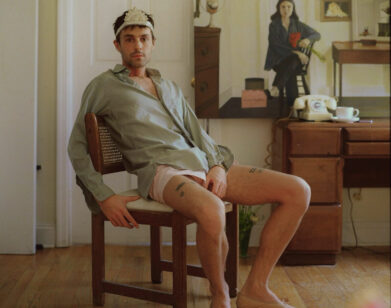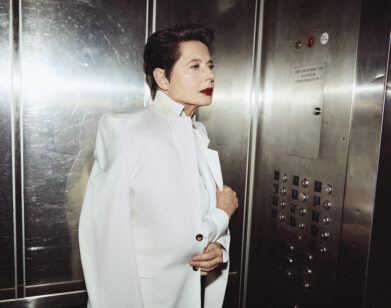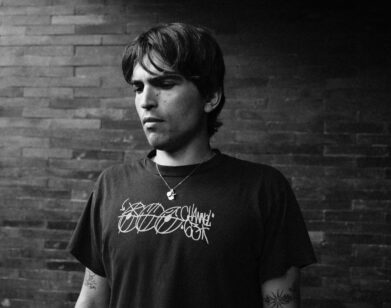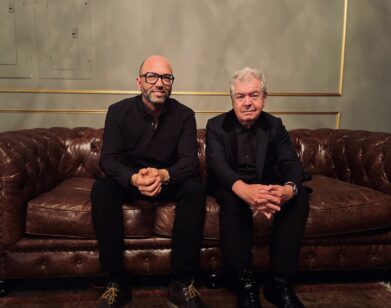A brief history of goth in 10 films
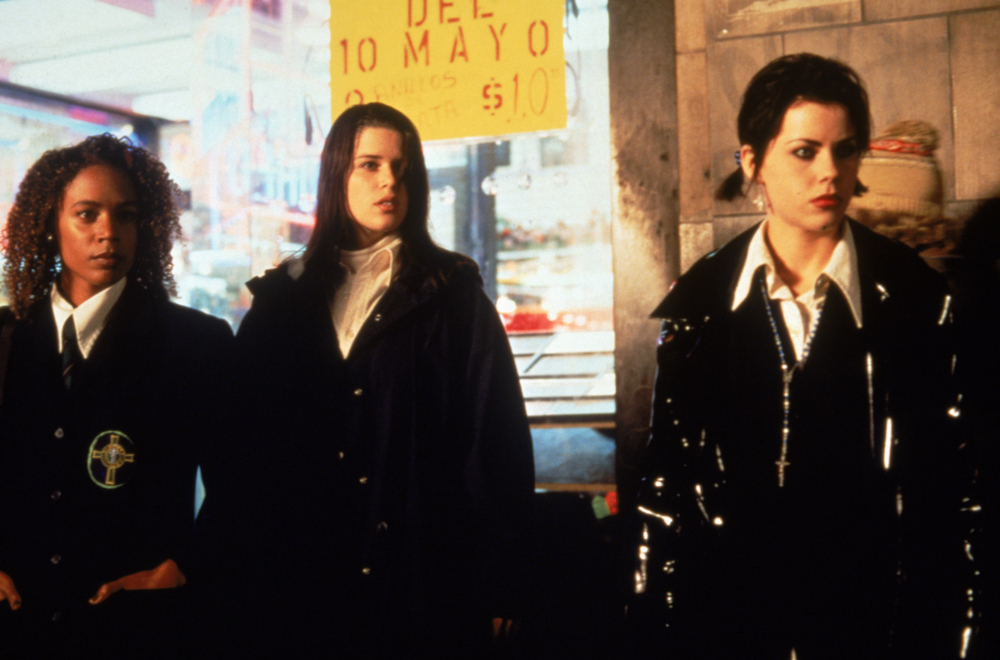
FILM STILL FROM “THE CRAFT” COURTESY OF SONY.
If you’ve ever owned a velvet choker, dressed like someone from The Addams Family, or insisted The Cure sold out with “Friday I’m in Love,” then chances are you’re super into gothic cinema. At the very least, one of your favorite films—whether it’s The Craft, Lost Highway or Near Dark—belongs to the gothic tradition.
But what counts as gothic cinema? Even though the genre’s gloomy, shadow aesthetic originates from the 19th century fiction of Mary Shelley and Edgar Allen Poe, the cultural movement has survived in film form by persistently seeking out fresh blood for itself. Thus Bram Stoker could put pen to paper with Dracula in 1887 and inadvertently shape how Robert Pattinson would sink his incisors into Kristen Stewart for the Twilight movies. (Which is surely what Stoker intended.)
Moreover, gothic cinema is about drawing the curtains and identifying with outsiders. Sure, there’s the giddy thrill of tiptoeing past coffins in creaky castles, or the allure of uncovering ghostly family secrets (like why your uncle has so many anecdotes about the 14th century). But these films are also for anyone who’s ever looked into a mirror and felt more like Lydia Deetz in Beetlejuice than Cher Horowitz in Clueless. And if you don’t see your reflection at all? Then these movies might even be about you.
From December 1 onwards, New York’s Metrograph will be screening a Goth(ic) series, a celebration of 32 films that trace the history of gothic cinema and goth subcultures. These include landmarks of the 1930s (F.W. Murnau’s Nosferatu, James Whale’s Bride of Frankenstein), genre-defining suspense thrillers (Alfred Hitchcock’s Rebecca, Robert Wise’s The Haunting), right up to more recent popcorn fare (Alex Proyas’ The Crow, Neil Jordan’s Interview with the Vampire). Mostly on 35mm, of course.
Near Dark [1987]
A gothic romance, a nocturnal western and a sincere bloodsucking horror all in one, Near Dark also rewrites the rules by mentioning the word “vampire” zero times. It begins with a Tangerine Dream-scored midnight meet-cute. Caleb leans in for a kiss, and Mae leans in further to bite his neck, sentencing him to an eternity of avoiding sunlight—quite a commitment for a first date. From there, Caleb must prove his killer instincts to Mae’s gang (related by blood, not necessarily biologically). Above all, director Kathryn Bigelow confirms that real vampires dress for comfort: jeans, leather jacket, and something cheap that’ll soak up the inevitable red stains.
Possession [1981]
Possession, undoubtedly Andrzej Żuławski’s masterpiece, was supposedly pitched by the late filmmaker to Paramount as: “A woman fucks an octopus.” But then again, the shock factor of Isabelle Adjani’s character bedding a multi-tentacled alien is overshadowed by the visceral horror of her painful divorce with Sam Neill and her subsequent murder spree. For Adjani, Berlin is an open-air prison, with a grocery trip teeing up the infamous subway scene: she laughs uncontrollably with hysteria, smashes a bag of eggs (which she just purchased!) and vomits up her insides. Goes to show you can’t really trust your neighbors, especially the ones breaking the no-pets policy.
Lost Highway [1997]
David Lynch’s adoration of industrial and gothic music peaked with the haunting soundscape of Lost Highway. In the bewildering middle section, Balthazar Getty’s character stumbles into a drug-fueled nightmare, which is evoked by belting Rammstein at full volume and a cameo from Marilyn Manson as a porn star. Assembled by Trent Reznor (who appeared with “The” Nine Inch Nails on this year’s Twin Peaks), the eclectic soundtrack boasts original tunes by Manson and The Smashing Pumpkins. By the end, you suspect from the Mystery Man’s appearance that Lynch really hates it when goths approach him at parties.
The Doom Generation [1995]
“This place is so fucking boring,” Rose McGowan’s character sighs. “I wish someone would burn it to the ground.” Soon afterwards, three kinky goth rebels—played by McGowan, James Duval, Jonathan Schaech—behead a shopkeeper and go on the lam. That the media identify the trio for their fashion choices says it all; Duval’s skull earring, a newsreader observes, is “often worn by homosexuals, Satanists and members of other dangerous cult groups.” Jokingly introduced as “A Heterosexual Movie by Gregg Araki,” it helped establish a few of Araki’s filmmaking trademarks: a shoegaze soundtrack, outrageous sex scenes, and foul-mouthed witticisms like, “Eat my fuck.”
The Craft [1996]
As attested by the ever-present “We are the weirdoes, mister” memes on social media, the spell of Andrew Fleming’s cult teen landmark still hasn’t worn off. In The Craft, Robin Tunney joins a typically cliquey school, only to befriend “the bitches of Eastwick,” three alleged hallway witches played by Fairuza Balk, Neve Campbell and Rachel True. With defiant outfits that sneakily bend uniform regulations, the foursome unlock their supernatural powers and seek Carrie-esque revenge upon a racist classmate, an abusive father, and a male-dominated system. Unlike the current trends of “arthouse horror,” it’s fun, action-packed, and also truthful to the emotional turmoil of being ostracized from a coven. Sound stressful? Relax, it’s only magic.
Fascination [1979]
Jean Rollin’s hypnotic, sex-obsessed filmography is a bit intimidating. Pick the wrong entry point, and you’re pretending to be bored by one of the prolific French auteur’s many soft-core porno flicks. A safe bet, though, is Fascination, a lyrical vampire horror which posits that sipping oxen blood is a popular Goop-style cure for anemia. Story-wise, a runaway criminal stumbles upon a spacious chateau where he’s seduced by two bisexual women; then after dark, the knives come out. As per usual with Rollin, the film’s pleasures stem from its dream-like pacing, evocative colors and ability to exist within its own vivid, vampire-populated world.
Twilight [2008]
It’s weird to think that Robert Pattinson and Kristen Stewart, the two best young indie actors working right now, may never appear onscreen together again—unless it’s a Twilight retrospective. Moreover, Hardwicke’s adaptation of Stephenie Meyer’s novel deserves a (re)visit for unabashedly catering to its demographic. Regardless of whether you consider the film to be a misunderstood masterpiece of teen angst or an overly sentimental mess where everyone looks malnourished, its cultural impact is undeniable. And if you’re that much of a snob, you can just pretend the baseball scene means it counts as a gritty sports movie.
Vampire Hunter D [1985]
In Vampire Hunter D, the future is a foreign country—or at least, they dress differently there. Set in 12,090 AD, director Toyoo Ashida’s dystopian anime envisions a gloomy landscape patrolled by mutants and demons. Doris Lang, a young werewolf hunter, finds herself bitten by a vampire, and so she calls upon the assistance of fang-fighter called D. The unnecessarily knotty plot can be forgiven for the inventive mash-up of genres: sci-fi, western, horror and action-adventure all interchange, with the bonus revelation that D’s horse is a DL4-model cyborg. Watch it before the inevitable whitewashed live-action remake.
Beetlejuice [1988]
Winona Ryder found her breakthrough role as Lydia Deetz, a goth teen who dresses in all-black funeral gear for a family dinner and announces, “I plan to have a stroke from the amount of MSG in this meal.” As a girl who knows how to have a bad time, she finds an affinity with the dead, which produces all kinds of mayhem via Tim Burton’s macabre imagination running wild and Michael Keaton having a ball as a freelance ghost. Why is Beetlejuice so twisted? Apparently he’s seen The Exorcist 167 times. And if you’ve got a “WINO FOREVER” tattoo, be sure to check out Ryder in Francis Ford Coppola’s Bram Stoker’s Dracula [1992].
The Lost Boys [1987]
Even though they can fly and literally have eternity to walk anywhere they wish, the vampire teens of The Lost Boys get around by motorcycle—that’s just how cool they are. It’s one of the many neat, mischievous touches in Schumacher’s extremely ‘80s horror comedy, a celebration of bloodsuckers as the coolest kids in town. In fact, the peer pressure is so strong, Jason Patric makes the all-too-human decision of pursuing a crush despite her undead status. Best of all, the film obeys gothic lore and traditions with a sly wink: Corey Haim’s survival manual isn’t a dusty novel from the library, but a comic book from the local store.
METROGRAPH’S GOTH(IC) SERIES RUNS FROM DECEMBER 1, 2017. MORE INFORMATION CAN BE FOUND HERE.


